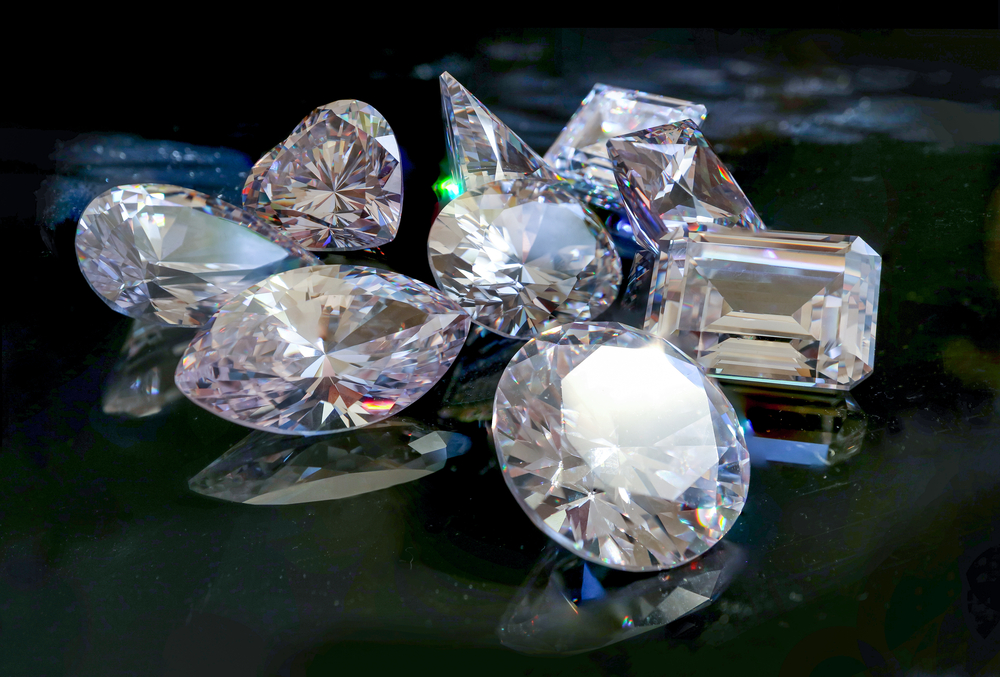
Choosing an engagement ring is one of the most significant purchases in a person’s life. It’s not just about selecting a beautiful piece of jewellery, but about choosing a symbol of love and commitment that will last for years to come. One of the most common dilemmas for modern buyers is deciding between natural diamonds and lab-grown diamonds. Both options offer unique advantages, but the right choice depends on your preferences, values, and budget. This guide will help you navigate the differences and make an informed decision when buying an engagement ring.
What Are Natural Diamonds?
Natural diamonds are formed over billions of years, deep within the Earth’s mantle, under extreme pressure and heat. Each natural diamond is a unique product of nature, with no two being exactly alike. These diamonds are mined from the earth, cut, polished, and graded according to the 4 Cs: cut, colour, clarity, and carat weight.
Natural diamond engagement rings are known for their rarity and historical significance, and they often come with a higher price tag due to their natural formation and the resources required to mine them. For many, a natural diamond is a timeless symbol of love, luxury, and permanence.
What Are Lab-Grown Diamonds?
Lab-grown diamonds, also called synthetic or man-made diamonds, are created in laboratories using cutting-edge technology that replicates the natural diamond formation process. These diamonds are made from carbon and have the same physical, chemical, and optical properties as natural diamonds. The main difference lies in how they are formed—lab-grown diamonds take weeks or months to create, while natural diamonds form over billions of years.
Lab-grown diamonds offer an affordable alternative to natural diamonds and are often 30% to 50% less expensive. They are also considered more sustainable and ethically produced since they do not require mining and its associated environmental impacts. Despite their lower cost, lab-grown diamonds are just as brilliant and durable as natural diamonds.
Key Considerations for Buying a Diamond Engagement
Ring Budget
One of the first factors to consider when buying an engagement ring is your budget. Lab-grown diamonds are significantly more affordable than natural diamonds, which means you can purchase a larger or higher-quality stone within the same price range. This affordability allows buyers to opt for more carat weight or better clarity without stretching their budget.
On the other hand, natural diamonds hold their value better over time due to their rarity. If long-term value retention is important to you, a natural diamond might be a better investment, especially when considering the heirloom potential of the stone.
Rarity and Value
Natural diamonds are rare, which is part of their allure. The fact that they have formed over billions of years and are mined from limited sources adds to their uniqueness and value. Certain rare natural diamonds, such as pink or blue diamonds, can appreciate in value over time, making them a solid investment for collectors.
Lab-grown diamonds, while identical in appearance, do not have the same rarity. Because they can be produced on demand, their supply is not limited. As technology advances and production becomes more efficient, the market value of lab-grown diamonds may decrease over time.
Ethics and Sustainability
In recent years, consumers have become more concerned with the environmental and ethical impact of their purchases. While the natural diamond industry has made strides toward more ethical and sustainable mining practices, such as conflict-free certifications and environmental safeguards, the process of mining diamonds still has a significant environmental footprint.
Lab-grown diamonds, however, offer a more sustainable alternative. Since they are created in a controlled environment, they do not involve mining, and they have a much lower environmental impact. For buyers who prioritize sustainability and ethical sourcing, lab-grown diamonds are often the preferred choice.
Symbolism and Tradition
For some, the symbolism and tradition associated with natural diamonds are irreplaceable. Natural diamonds have long been the go-to choice for engagement rings, representing timeless love and commitment. Many people feel a deep emotional connection to the idea of owning a gemstone that has formed naturally over millions of years.
Lab-grown diamonds, while newer to the market, are also becoming increasingly popular, especially among younger generations who prioritize ethical consumerism and environmental responsibility. Lab-grown diamonds can still carry strong emotional meaning, particularly for couples who want a beautiful, sustainable option.
Making the Final Decision
The choice between a lab-grown diamond and a natural diamond ultimately comes down to personal preference and priorities. If you value rarity, long-term value retention, and the historical significance of a naturally formed gemstone, a natural diamond may be the right choice for you. However, if affordability, sustainability, and ethical sourcing are your main concerns, a lab-grown diamond could be the perfect option.
Both natural and lab-grown diamonds offer stunning beauty and durability, ensuring that your engagement ring will be a cherished symbol of love for years to come. No matter which option you choose, the most important thing is that the ring reflects your personal values and the commitment you share with your partner.





